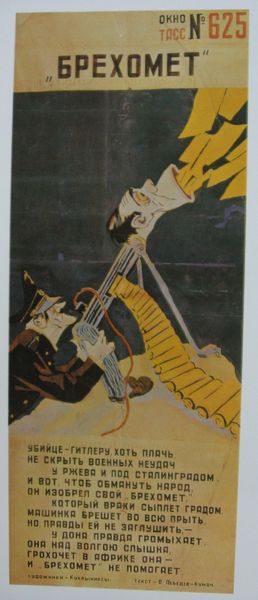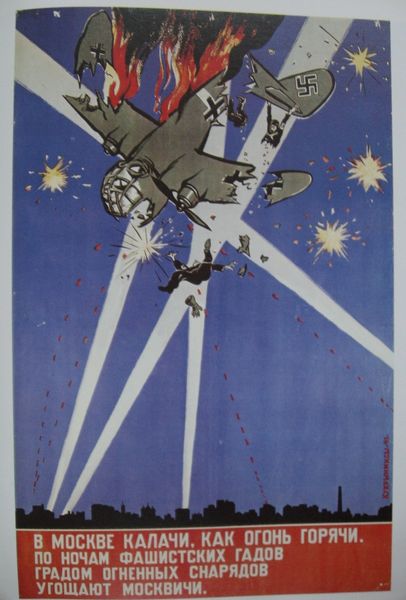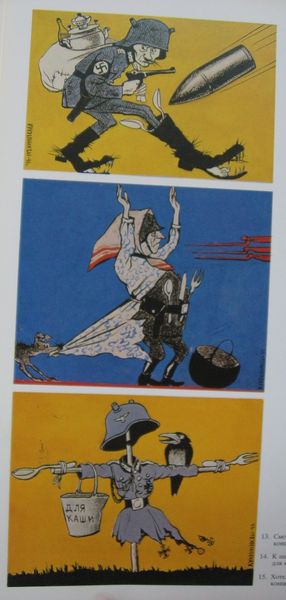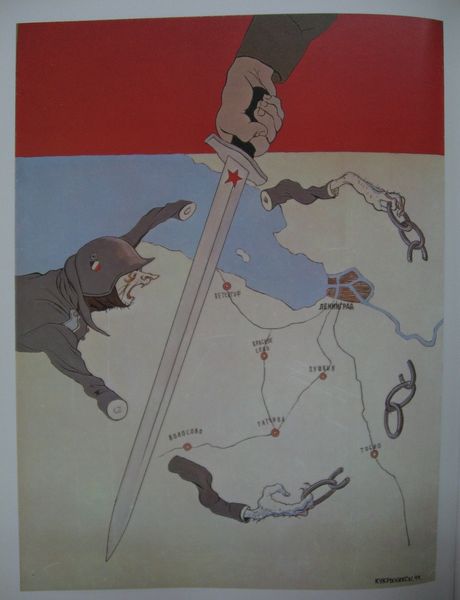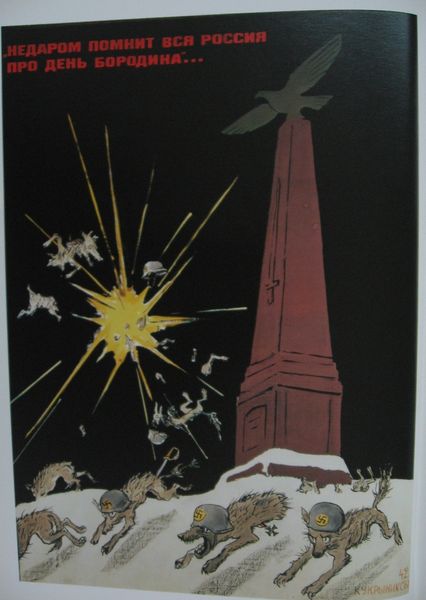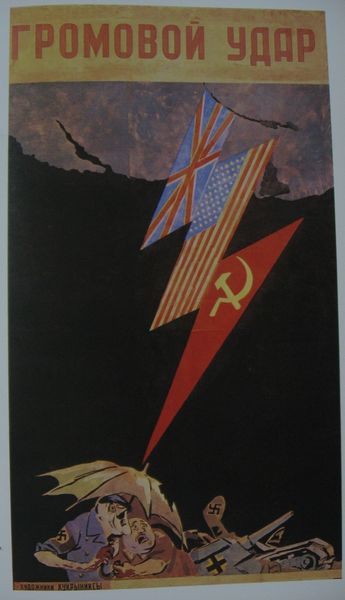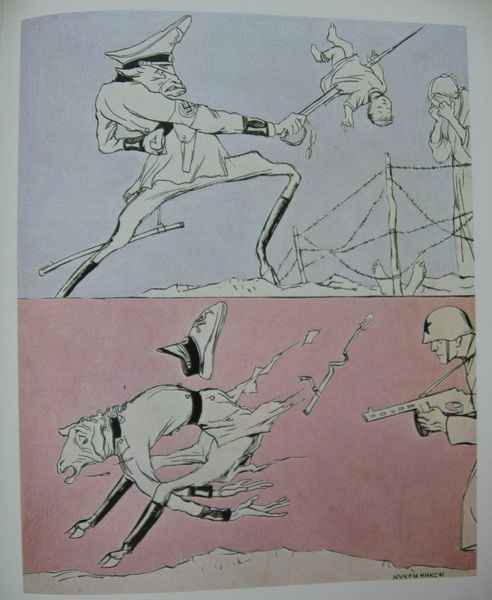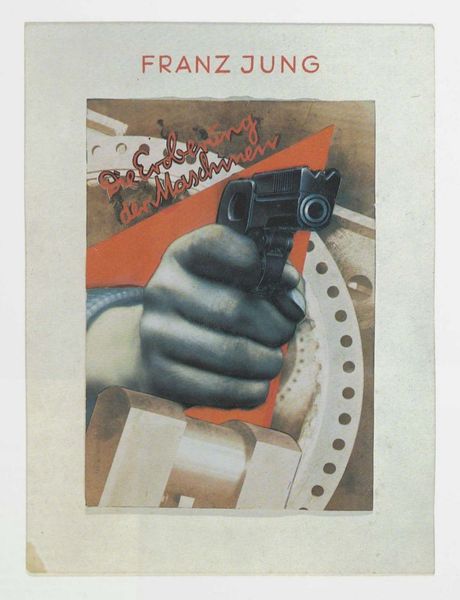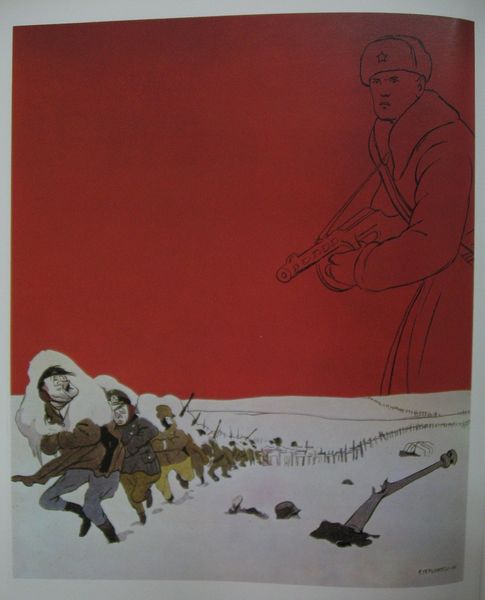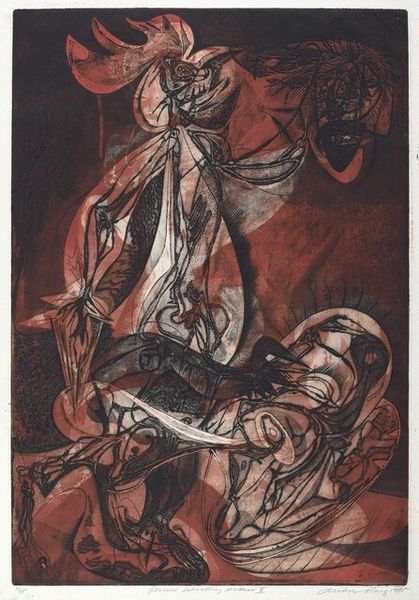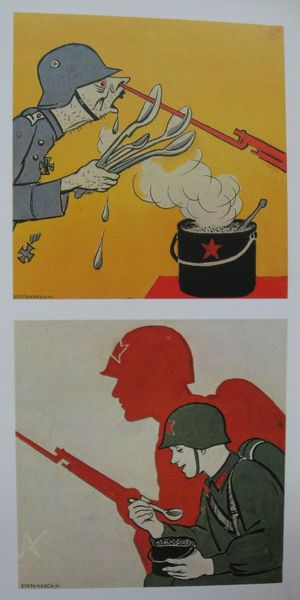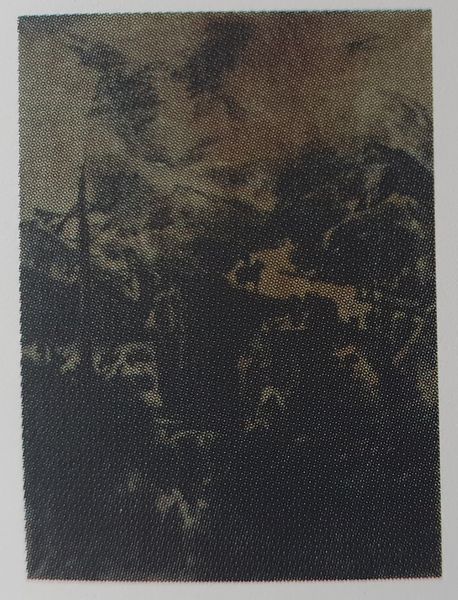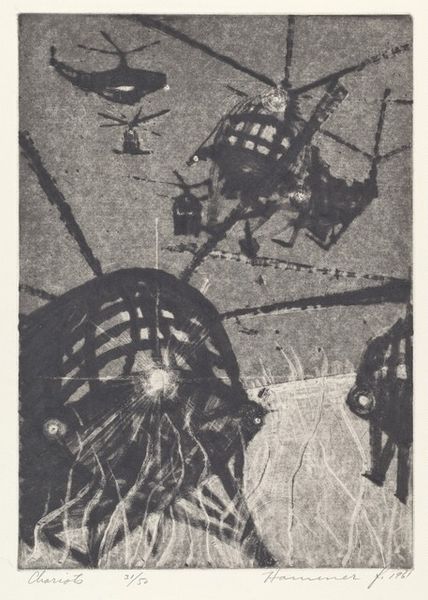
graphic-art, print, poster
#
graphic-art
#
narrative-art
# print
#
war
#
soviet-nonconformist-art
#
figuration
#
social-realism
#
oil painting
#
cityscape
#
history-painting
#
poster
Copyright: Kukryniksy,Fair Use
Curator: Let's delve into "To Victory!" created in 1943 by the collective known as Kukryniksy. It is a print, likely mass-produced as a poster. My initial sense is one of stark propaganda. What strikes you first? Editor: The dramatic contrast, definitely. The Soviet soldier is almost idealized, rendered in bright colors. Below him, a fallen German soldier is stuck in barbed wire and the swastika is clearly visible. It feels incredibly direct. What do you see in this piece beyond its obvious symbolism? Curator: I see a meticulous construction meant for dissemination and consumption. Look at the means of production here. A print, designed for mass appeal. The division of space: the idealized Soviet soldier versus the defeated enemy. What materials and process decisions influenced that stark contrast, and to what end? Editor: So, it is less about aesthetic appreciation and more about its function as a tool of the state? Curator: Precisely! Consider the paper quality; undoubtedly, resources were limited during wartime. The printmaking process itself—was it lithography, screen printing? Each method carries different connotations of accessibility and speed of production, contributing to the artwork’s purpose in shaping public opinion and war effort support. And the colours aren’t accidental: The vibrant red and the darker neutral colour are used to create a juxtaposition that serves its purpose for dissemination. The material conditions are crucial for our understanding. How might its original audience have interpreted it based on their material realities? Editor: That makes a lot of sense. I hadn't really considered the actual paper and printing techniques as contributing to its message, but of course they do. The war effort *is* built on those basic materials and distribution. Curator: Indeed. It prompts us to rethink our definitions of art, and who it serves. Even its creation—a collective of artists instead of a solitary genius— speaks volumes about the shifting understanding of production and artistic labour during wartime. Editor: I've always seen it as propaganda, but understanding it as a product of material conditions helps me appreciate its complexities more. Thank you for illuminating that perspective!
Comments
No comments
Be the first to comment and join the conversation on the ultimate creative platform.
